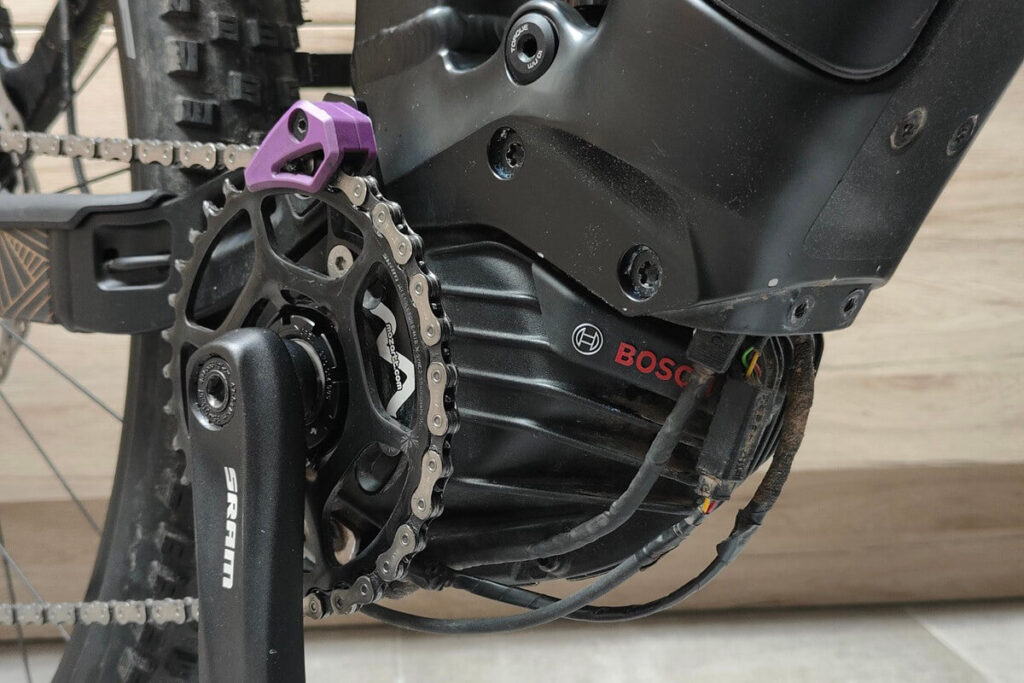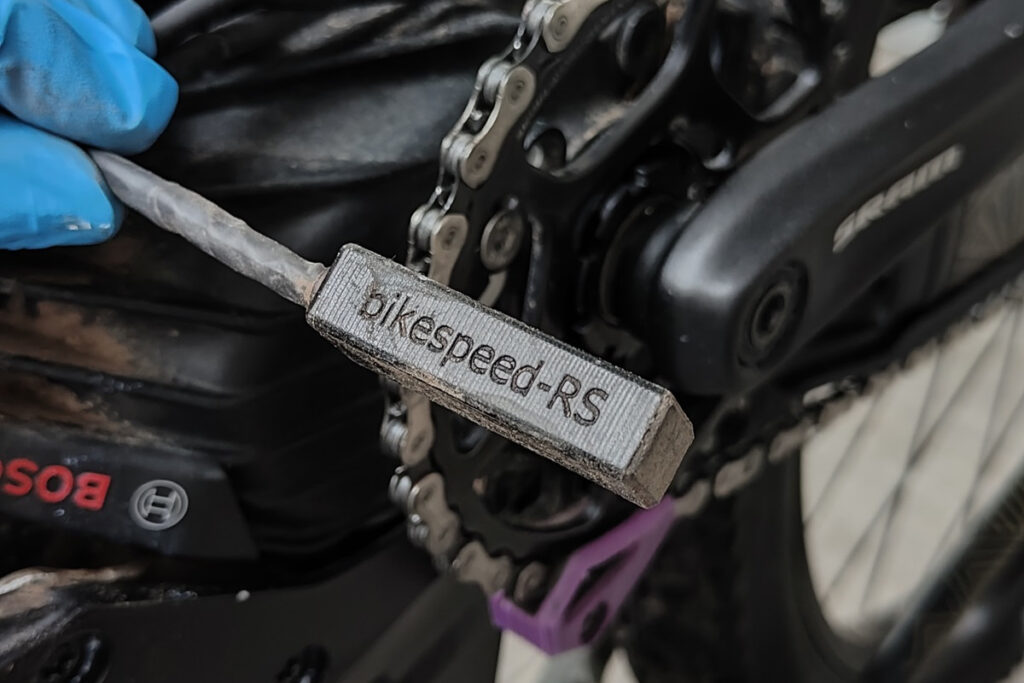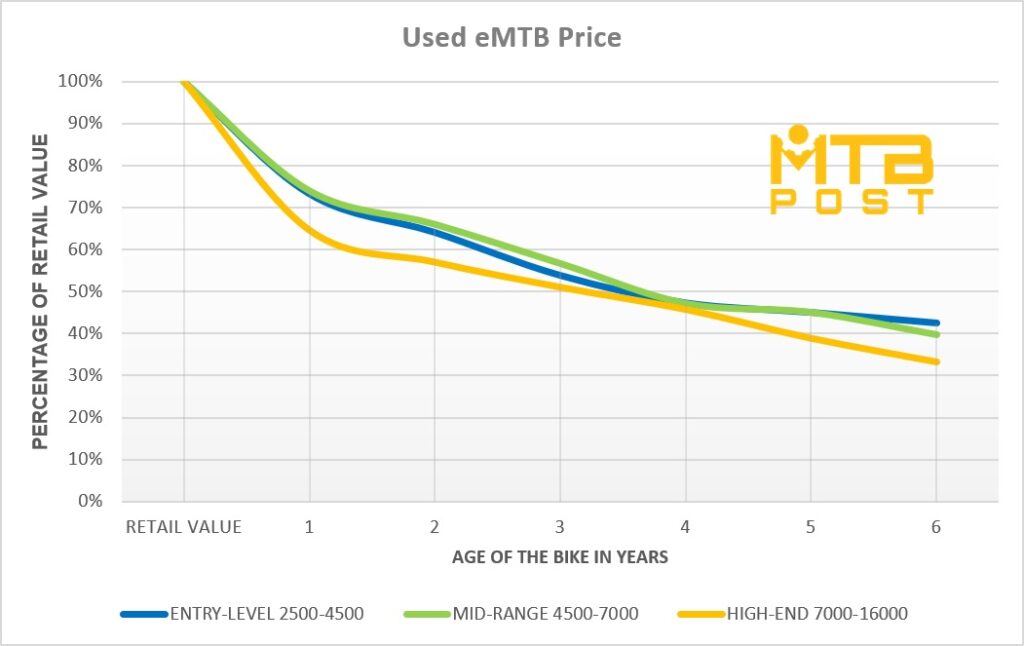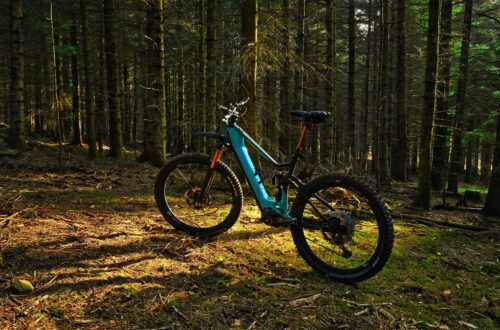
Should You Buy A Second-Hand eMTB?
There’s no way around it; electric mountain bikes are expensive. To save some money, you could consider buying one second-hand. But with the risk of buying a bike with a faulty motor or battery, is that even a good idea?
I’ve worked in the used-car market for almost ten years and with this background, I’ve done a lot of research into the ins and outs of buying a used eMTB. This article is for riders who are still in doubt about whether to buy new or used. We will talk about risks, warranty, prices and what’s the safest way to purchase a second-hand bike.
Motor And Battery Lifespan
The biggest fear of anyone buying a used e-bike, is a faulty motor or battery. And rightly so, because issues in that area are unfortunately still quite common. Replacement parts are also very expensive. To illustrate: the price of a new Bosch Performance Line CX Gen4 is €650/$700. A new Bosch Powertube 625Wh battery costs €600/$650.
Practice has shown that the Bosch Performance Line CX Gen2 is quite a durable motor. And that the Shimano EP8 has a less positive reputation. Which is good to know, but for you as a second-hand buyer that doesn’t mean much.
It’s virtually impossible to make a statement about motor and battery lifespan. Some believe that the lifespan of a motor is 10.000 miles/16.000 km and that the battery should be good for 1000 charge cycles. But then there are examples of motors that didn’t even get halfway…

There are many factors that can shorten or lengthen the lifespan of motor and battery:
- How has the bike been treated? Extreme riding or some gentle cruising?
- Has the motor been maintained? Brose motors for example need maintenance.
- Has the bike been tuned/derestricted? Tuning shortens the lifespan of the motor and battery.
- How has the bike been washed? Using a water jet can cause water damage to motor and battery.
- How was the battery stored? Hot temperatures shorten the lifespan.
- How often has the battery been charged? Battery capacity will deteriorate over time.
- Has the battery been fully discharged often? Fully discharging your battery is harmful.
These factors are often impossible to check. Then there are also factors that are out of your control, like manufacturing-defects. Only a certified dealer is able to check the system by performing a diagnose.
Bottom line is that you as a used eMTB buyer, shouldn’t focus too much on motor and battery lifespan. Repairability, customer service and warranty however, are much more useful in case of an issue. Bosch for example, offer a reasonably priced service/repair kit for many of their motors.
Private Seller Or Bike Shop?
There are basically two ways to buy a used electric mountain bike: from a private seller or a bike shop.
Buying a second-hand eMTB from a private seller is often the cheapest option, but that doesn’t come without risks. There will be wear and tear of course, but you don’t want to end up having to replace vital components like the motor and battery. And as we’ve seen in the previous section, there are a lot of factors that determine the condition of those parts.
In case of a dispute with the seller, chances are that you’re on your own. You have legal rights in some countries, but then the seller has to cooperate. If he doesn’t, you’d have to take it to court or just pay for the repair yourself. Either way, it’ll will be costly.
Buying an eMTB from a private seller that’s still under warranty, sounds appealing. But in that case, you’d have to be absolutely certain that that bike meets the manufacturers guidelines in order to be entitled to that warranty. Tuning for example is a huge no-go.
Buying from a bike shop, is a much safer way to buy a second-hand eMTB. You may assume that the people you’re buying from are experts and that the bike has been checked over. And in case of an issue, you’ll have legal protection and often even a warranty from the shop. That doesn’t make it a free of risk purchase, but you’ll at least have someone to fall back on.
Second-Hand eMTB Warranty
Having warranty on an e-bike offers the consumer some protection in case of a failure. New bikes usually come with a 2-year warranty. What does that even mean and what about warranty on second-hand bikes?
First of all, it’s important to understand that there are basically two types of warranty: legal warranty and manufacturer’s warranty. We’ll start off by explaining the difference.
It’s worth mentioning that the regulations surrounding warranty are different around the world. For the next section, we’ll just focus on the European Union.
Legal Warranty
The first one, the legal warranty (also: statutory warranty or legal guarantee), is arranged by law and is mandatory. It forms is the foundation in case of a defect. The legal warranty states that any product-defects that appear within a specified period of time, are the sellers responsibility provided that can be proven that the defect was already present at the time of purchase. The duration of this warranty is generally 2 years for new products and 1 year for used products, but that depends on where you live.

If the defect appears within the first half of the legal-warranty period, the burden of proof is with the seller. When he feels like he isn’t responsible, he has to proof that the issue can be resigned to improper use or wear and tear. If something was to happen in the second half of the legal-warranty period, it’s up to you to come up with the evidence.
When it comes to second-hand eMTBs, you’re also entitled to legal warranty. It doesn’t matter if you’ve bought it from a private seller or a bike shop, and as long as long as you can prove that the problem was already present at the time of purchase. But as you can imagine, private sellers often don’t even know that this warranty exists. In case of a dispute, the seller most likely won’t take any responsibility for the issue. Chances are that you’d have to take legal actions in order to resolve the issue.
A private seller can often waive this warranty, but he or she should explicitly mention this in the advert.
Manufacturer’s Warranty
That brings us to the second type, the not obliged manufacturer’s warranty (or manufacturers guarantee). The manufacturer’s warranty comes from the manufacturer free of charge, and can be seen as an addition to the legal warranty. It is an assurance from the manufacturer about the quality of the product. Their corresponding policy provides information about what’s covered and to what extent. If the product was used in accordance with the guidelines but still fails, it’s a manufacturing-defect which will be repaired or replaced by the manufacturer.
Manufacturers offer this warranty for free. It’s there to protect themselves, but also to inform you about when you can make a valid claim. It runs alongside the legal warranty and can never replace the legal warranty. For some brands the manufacturer’s warranty lasts longer than the legal warranty.
In practice there are often discussions about whether a failure can be assigned to a manufacturing-defect or improper use. Which is understandable as a mountain bike often has a hard life and wear and tear is inevitable. Luckily (and sometimes unfortunately), electric mountain bikes store data. A diagnose of the system by the dealer shows info like the amount of charging cycles, your preferred mode of assist, speed, temperature etc. This data can be used as proof in case of a motor or battery failure.
Because manufacturers warranty is determined by the manufacturer, it often only applies to the first owner. Therefore, it doesn’t come as standard on a second-hand eMTB, even if the bike is younger than 2 years. In the following section, we’ll talk about warranty transfers.
Manufacturer’s Warranty For Second Owners
Most manufacturers don’t offer manufacturers warranty for second owners to encourage people to buy a new bike. To find out to which brands this applies, I went through every warranty policy for the most common eMTB brands. I’ve listed the results in the table below.
| Brand | Warranty transferable to second owners? |
| Cannondale | NO |
| Cube | NO |
| Haibike | NO |
| Giant | YES, second owners are entitled to a 2-year warranty from the date of ownership transfer on the frame. On other Giant branded components, they get 2 years from the date of original purchase. Proof of purchase is required. |
| Husqvarna | NO |
| LaPierre | NO |
| Merida | NO |
| Mondraker | NO |
| Orbea | NO |
| Rocky Mountain | YES, for bikes newer than 2021, the original manufacturers warranty applies to second owners from the date of original purchase. The bike must be registered by the original and second owner. |
| Rotwild | NO |
| Santa Cruz | NO |
| Scott | NO |
| Specialized | YES, second owners are entitled to the original manufacturers warranty from the date of original purchase. Registration is not required, but a proof of purchase is. |
| Trek | YES, second owners get a 3-year warranty from the date of purchase on the frame. Proof or original purchase is required. |
| YT Industries | NO |
As you can see, only 4 out of 16 brands offer a warranty for second owners.
But what’s important to know, is that the manufacturer’s warranty applies to components that are produced by the brand itself, like the frame, swing arm other manufacturer-branded parts. All other (third-party) components on the bike, are covered by a warranty policy from the original manufacturer.
The conclusion is that if you buy a young (<2-year old) bike, you aren’t entitled to the manufacturer’s warranty in most cases. You will still be entitled to the statutory (legal) warranty. If your claim is valid, then the seller is responsible for resolving the issue.
If you buy a young bike from a brand that does offer (partial) warranty transfers, make sure that you follow their guidelines. I’d suggest you to always ask for the original invoice.
Please note that warranty policies are subject to change. The table above is therefore indicative. Always check the most recent warranty policy of the brand.
Motor And Battery Manufacturers Warranty
The motor and battery of an e-bike are third-party components, because they are produced by a different manufacturer than the bike itself. Specialized however, is an example of a brand that does produce their own motors. Other bike-brands use electrical components from Bosch, Brose and Yamaha for example.
These third-party components are covered by a separate manufacturers warranty policy. Which is a good thing, as I’ve found that these manufacturers are much more compliant when it comes to warranty transfers. Which is a positive for you as a second-hand eMTB buyer.
It was not easy to find the warranty policies for the most popular brand, so I’ve contacted them. You can find the results of my research in the table below.
| Brand | Warranty transferable to second owners? |
| Bafang | NO |
| Bosch | YES |
| Brose | YES |
| Shimano | YES |
| TQ | YES |
| Yamaha | YES |
Luckily, we can state that most manufacturers do offer a warranty transfers. Second owners are therefore entitled to the remaining of the original 2-year warranty. In case of an issue, you have to report it to a certified dealer. They can submit a warranty claim.
When you buy a bike that’s younger than 2 years from a private seller, it’s very important to be absolutely sure that it hasn’t been tampered with. Otherwise, the warranty will be void.
Also, to this table applies: warranty policies are subject to changes. The table above is therefore indicative. Always check the most recent policy.
Warranty By A Bike Shop
It’s good to know that some bike shops also offer a warranty on their used e-bikes. Which for you as a buyer would be an extra reassurance on top of the statutory warranty. Always make sure to read their policy to find out what’s included!
Be Aware Of Tuning
‘Tuning’ or ‘derestricting’ an e-bike refers to removing or altering the speed limiter to go faster. The most popular way to achieve this, is by a tuning-dongle or tuning-software. As a result, the motor doesn’t cut off at the legal speed limit. A tuned e-bike is illegal to use on the public road!
Other than it being illegal, it’s also bad for your bike. Derestricting puts additional stress to components like your battery, motor and drivetrain, causing them to wear prematurely.

As mentioned earlier, (signs of) tuning voids the manufacturer’s warranty immediately, even if the tuning device is removed. A diagnose of the system by a certified dealers can prove tuning. So, if you’re buying a second-hand bike and you care about warranty, it’s important to know about this!
Especially with buying from a private seller, I suggest you to get is diagnosed before you finalize the purchase. Electric mountain bikes are in my opinion too expensive to just rely on what the seller says. It’s also impossible for you to detect whether a tuning kit was removed.
Want to learn more about this topic? Read my blog post about tuning through this link.
Second-Hand eMTB Prices
A huge factor in answering the main question of this article, is the price of a second-hand eMTB. Are they fairly priced in comparison to a new one? Let’s find out.
Price Comparison: Private Seller Vs Bike Shop
I was curious to find out how prices from private sellers and bike shops relate to each other. Since buying from a shop is less risky, you’d expect prices from private sellers to be significantly lower.
For this research, I’ve selected 20 popular used electric mountain bikes and looked up prices from private sellers and shops. What I found was that a used bike (on average) is 9% more expensive if you buy it from a shop compared to buying from a private seller. Which isn’t that much!
Price Development
I’ve also done some research in how eMTBs depreciate over a few years. This will give us insights in how these prices compare to the price of a new bike.
For this research, I’ve looked up the average price of 120 second-hand eMTBs from various ages. I’ve then plotted the age of the bike against the value (in percent). Since we’ve discovered that prices from private sellers and bike shops prices are quite similar, I’ve only used prices from private sellers for this research.
I’ve subdivided the price development into three retail price ranges: entry-level ($2500-4500), mid-range ($4500-7000) and high-end ($7000-16000). You can see the results in the graph below.

Please note that ‘asking price’ and ‘selling price’ aren’t the same thing. When it comes to private sellers, there’s often a bit more room for negotiation. That however, is impossible to take into account for this research.
The graph above is also useful for eMTB owners that are unsure when’s the right time to switch to a new bike.
We’ll now discuss the results in the next section.
Are Second-Hand eMTBs Too Expensive?
From the graph, we can see that eMTB prices drop significantly in the first year: 25-30% for the entry-level and mid-range bikes, and 35% for the high-end bikes. Which offers a great opportunity to get a fairly new bike with a decent discount that’s still under manufacturers warranty.
After the first year, the depreciation begins to taper off more gradually for all price ranges.
When the bike hits the age of 3-4 years, the curve seems to be slowly flattening out for the entry-level and mid-range bikes. The more expensive high-end bikes continue to depreciate more linear. But overall, the cheaper electric mountain bikes seem to hold their value quite well.
In my opinion, that makes used eMTBs from private sellers too expensive considering the risk of buying a faulty bike. Let look at an example.
Let’s take a 4-year old entry-level eMTB with a new price of $4000. According to the graph, the average asking price would be around $2000. If the motor and battery would need replacing within the next 6 months, you’ll be looking at a $1000-1500 bill.
So, unless you’re a master at haggling, it’s a lot safer to buy a used eMTB from a shop!
If you want to find out why these bikes are so expensive in the first place, you should read my blog post about prices. To find out what’s the most expensive eMTB, click on this link.
Alternative To Buying A Second-Hand eMTB
If buying second-hand isn’t you thing, then you should consider buying last year’s model from a bike shop.
With new models entering the market every year, bike shops sell these bikes with a big discount to make room for the new stock. Some of these bikes have been used as a demo-bike for customers to try out, but others are completely new.
As long as the bike hasn’t been used as a rental bike, you’ll be the first registered owner. Which means that you’re entitled to the full extent of the manufacturer’s warranty. Just keep in mind that the most common sizes and most desirable colors often aren’t available.
Summary: Should You Buy A Second-Hand eMTB?
We’ve now come to the summary of this article. Should you buy a second-hand eMTB? Well, there’s no definite answer to this question as there are many factors involved.
First of all, buying a second-hand electric mountain bike is not only good for your wallet, but also for the environment. But since the motor and battery of an e-bike is still a big concern, you have to protect yourself against defects in that area as much as possible.
Based on my research, we can say that used electric mountain bikes from private sellers are too expensive. The risk of buying a faulty bike isn’t sufficiently priced in. In case of an issue, there’s a big chance that you’re on your own. Although buyers in some parts of the world do have legal rights, it generally ends up costing them a lot of money.
If there’s no proof of any repairs or if you’re not able to get the bike diagnosed by a dealer, I wouldn’t purchase from a private seller.
The safest way to buy a used eMTB is from a bike shop. This way you know that the bike has been checked over by an expert and you’ll have someone to fall back on in case of an issue. My research has also shown that these bikes aren’t significantly more expensive than bikes from private sellers. You also have a better chance of making a valid warranty claim.
But remember, don’t let a shiny bike deceive you; always do your research and calculate your risks. With new affordable electric mountain bikes entering the market right now, a brand-new bike might even be closer than you think!





